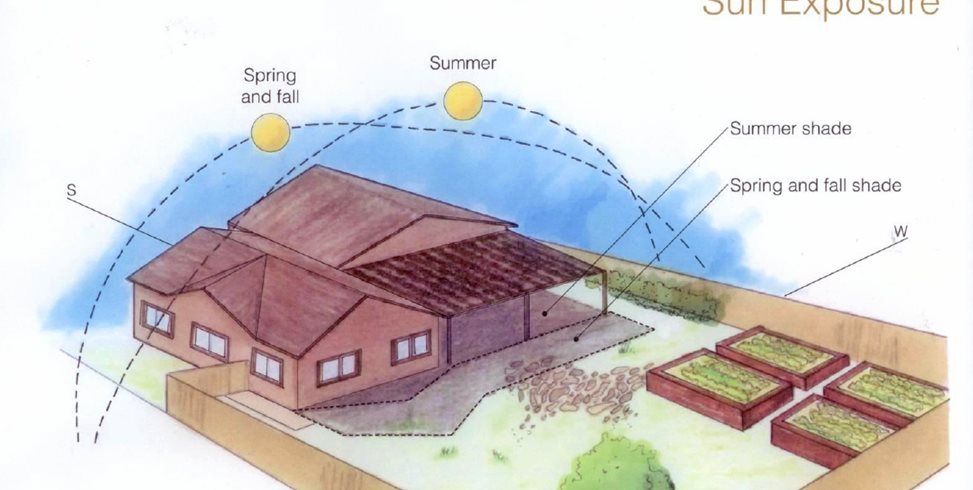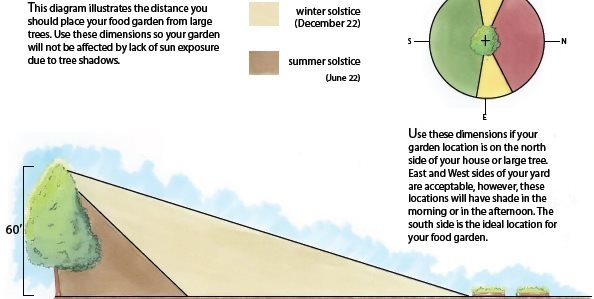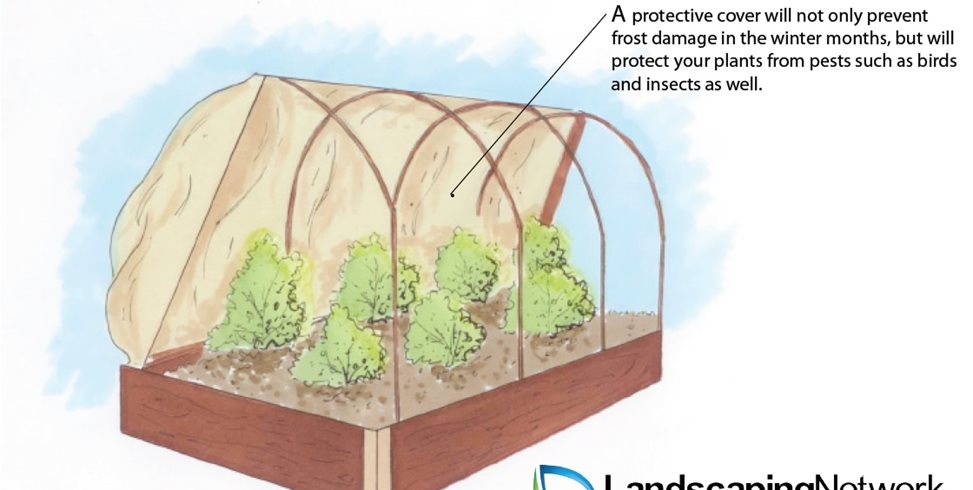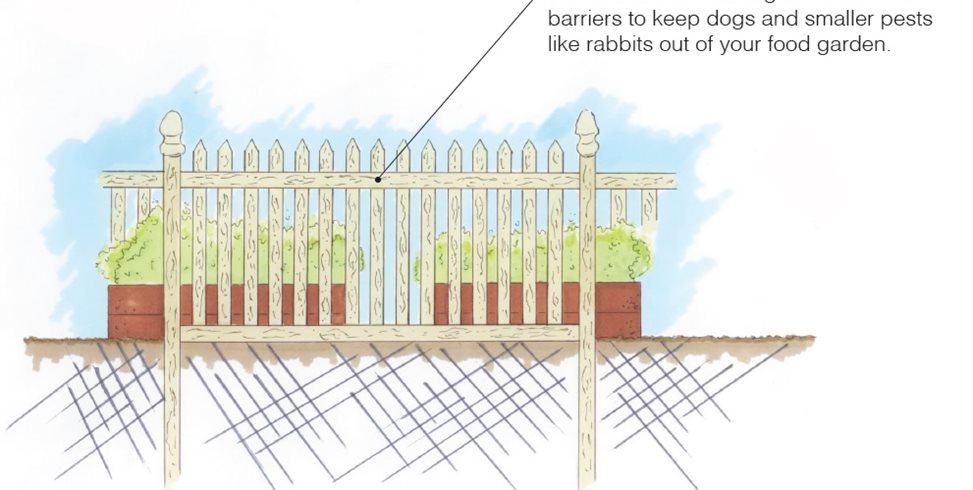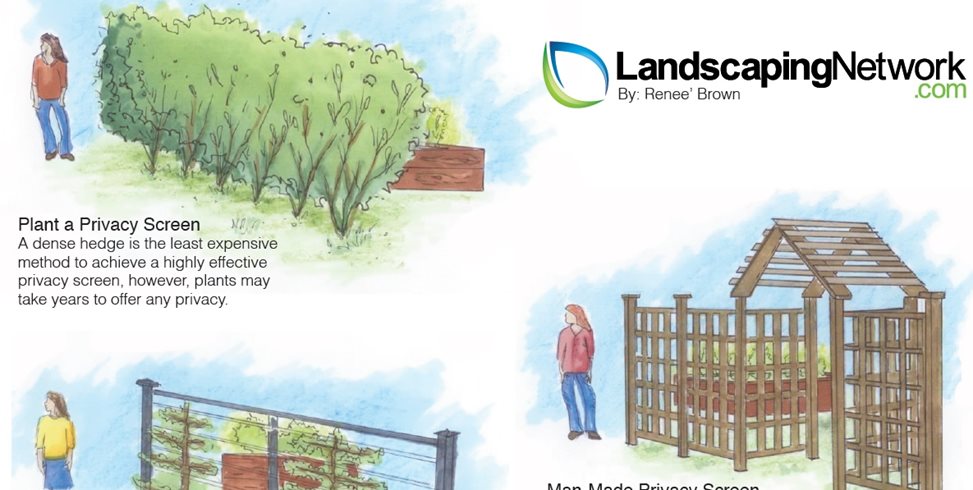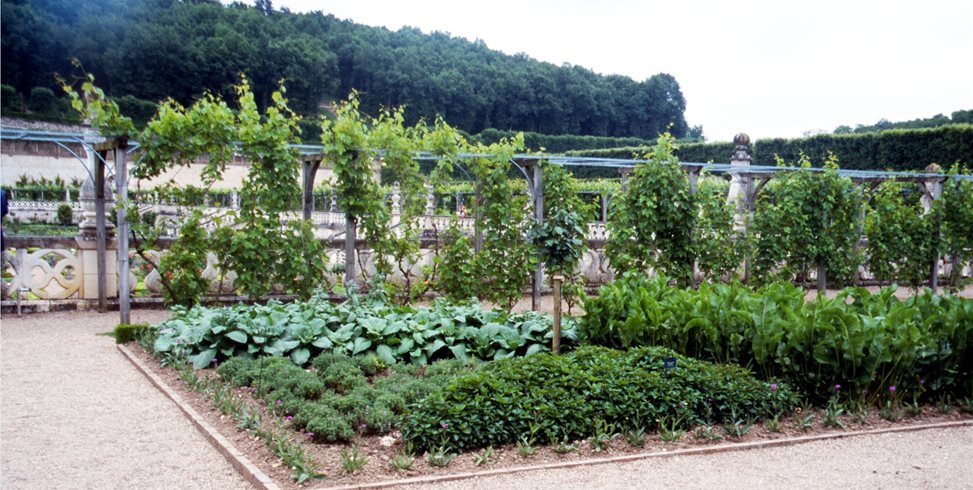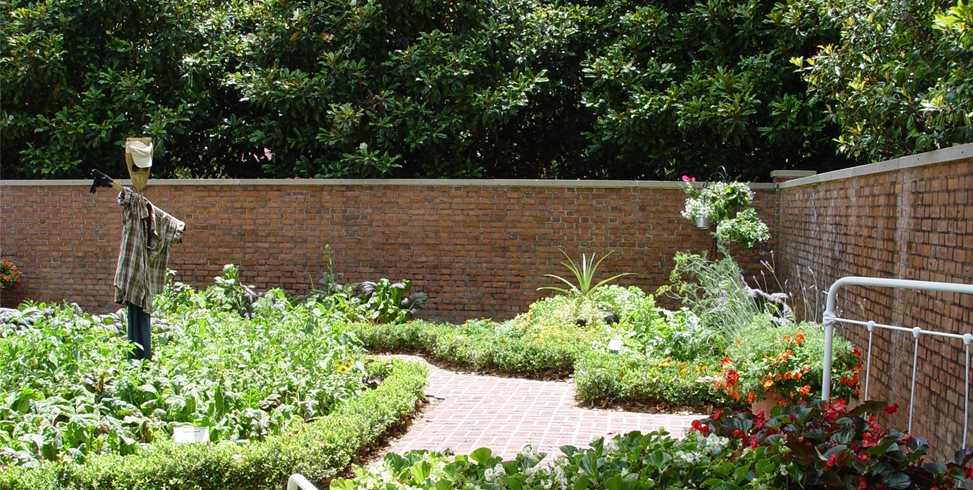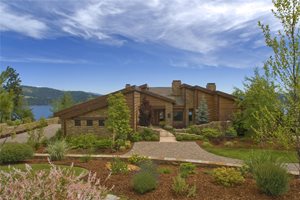Food Gardens in the Landscape
Four design caveats for incorporating an edible garden into your landscapeWhen Hollywood celebrities are bragging about their home food gardens, you know the lowly art of residential agriculture has become a high-end amenity. If your new landscape will include a vegetable garden for seasonal fresh food, be aware that this is a relatively new feature to the landscape industry. Some people have never grown food plants nor are they skilled at this kind of garden design. They may fail to understand that it's not about how plants look as much as how well they produce!
You can't afford a mistake when site planning this area into the overall landscape. Don't let your designer drop a garden into leftover space because this may not be the right place for plants to perform. Like real estate, food gardens are all about location. Get it right and they flourish to yield bountiful crops year after year. Blow it and plants languish, fail to thrive and become a bug infested failure. So long as you understand the principles of what food plants need, you'll be able to work with your designer to make sure it is well situated within the site plan. Here's what you need to know:
Edible Landscape Plants
Want to grow more than just annual crops like corn and tomatoes? Use this chart of edible plants, including trees, vines, shrubs and perennials, to decide what you would like to grow in your food garden.
Exposure
This is the most important factor because food plants are largely annuals which, like their floral counterparts, require full sun for many hours in the day. If the plants are denied adequate sunlight, they elongate, grow weak and spindly, eventually becoming overly vulnerable to pests and disease. All of this means they fail to fruit.
The position of a food garden must have clear exposure on the east, south and west sides. In very hot summer climates it can be beneficial to have protection on the west side to protect plants from baking in the hot afternoon sun. Beware of locations where man-made elements such as your house, garage, fence or neighbor's stored vehicle will influence how the sun reaches your proposed garden.
- Pro Tip: The sun passes overhead in summer but moves southward toward midwinter. Be aware of how the sun's position changes relative to this garden to ensure it is properly positioned for conditions from late spring through summer.
Alelopathy
Some trees known as alelopathic evolved in dry climates where competition for limited soil moisture is keen. They adapted by exuding chemicals that act as herbicides to prevent other seeds or roots from entering their moisture zone. Toxins are present in bark, leaves and roots, and litter that accumulates gradually poisons the ground. Even if the tree is removed prior to creating the garden, residual toxins may remain in the soil for many years to come. The most common problem species: Acacia, Eucalyptus, Black Walnut, Ailanthus-Tree of Heaven, Black Locust
Avoid trees
Existing trees can influence the spaces and soil that surrounds them. They cast shadows that grow long in some seasons, so beware of how these may move to influence the garden. Underground tree roots can travel far and wide to create a network that is nearly impossible to dig through. They can make tilling next to impossible.
Some trees such as oak or pine bear foliage that is highly acidic, and over time the litter can actually change soil PH in the area around the canopy. Be sure to know the species of all existing trees that may influence the garden location in order to avoid problems in the future.
Visibility
The truth is that food gardens look great in spring, but by late summer tomatoes are rangy, the corn is turning yellow and those tidy greens have bolted into spindly stalks. In fact, much of the year a vegetable garden is unattractive, so positioning is so important to making sure it's not highly visible to outdoor living spaces or within important views. Ask your designer to create visual screens of plants or constructed partitions that limit the visibility of your food garden from key windows of the house as well as outdoor living spaces. That way if you choose not to grow a garden one year, or simply can't keep up with the current year's chores, you won't have to look at it.
Protection
Vegetable plants and their fruits are highly appealing to deer, gophers, and other forms of wildlife. They can also lure dogs and kids who can wreck havoc on mature plants. If any of these apply to your project, it's important to design a protective barrier to surround the food garden.
Deer are the most challenging because they can easily leap high fences. As a result deer fences have always been unattractive. If your garden is visible, explore new fencing options that disappear into the background of shrubs and trees. Some wider fencing designs exploit the fact that deer jump high but not wide. For rural homesites with room to spare, a double fence or the upside down L shaped fence widen the barrier to four feet, beyond the leaping distance for most deer.
Pickets and woven wire fences are the traditional enclosures to exclude dogs and smaller pests such as rabbits. Where visible, invest in an attractive fence and gate that is also functional. Where burrowing rodents may go underneath, add an underground wire barrier along the fence line.
The food garden is part of a larger landscape, and though it may be disguised or made more attractive where highly visible, its sole purpose is to produce crops. This means your plants must thrive there, which depends largely upon its exposure. To get that right, think like a realtor who knows that even the best home is hard to sell when the lot is in a crummy location.

 Backyards
Backyards
 Front Yards
Front Yards
